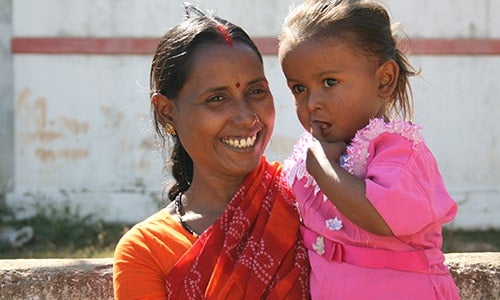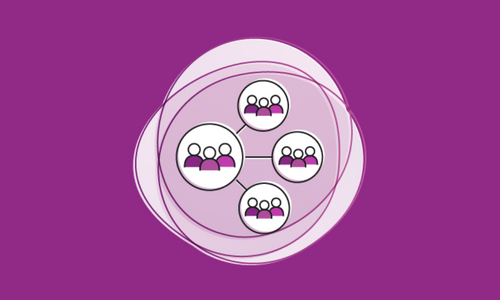Up close and personal with the hottest trend in social norms measurement: Qualitative vignettes

The Learning Collaborative to Advance Normative Change is a network of experts committed to facilitating collaboration between organizations and individuals working on adolescent and youth norms-shifting interventions. Members are working collectively to build knowledge and tools to promote and guide effective social norm theory, measurement, and practice. To this end, we have developed a series of blogs to clarify some of the key concepts in social norms work.
In our previous blog, we discussed the importance of taking time at the formative stage of a norms-shifting intervention to collect, analyze, and interpret information to explore whether and how social norms are influencing a given behavior in a particular context. In this, our seventh blog of the series, we explore the use of qualitative vignettes for social norms measurement.
Let me tell you a story about a fictional character named Leigh. Leigh considers herself a reliable person, and values her work relationships. One day, a colleague we’ll call Bryan asked her to write a blog on vignettes. She was excited and agreed to do it, even though she was not sure when she would find time. She even told a lot of other colleagues she was going to write it, including making a public pledge at a meeting of experts. Months wore on, and Leigh still hadn’t found time to write the blog.
Now ask yourselves:
- What would Leigh’s colleagues’ opinions be of her in this situation?
- Would Leigh’s expectations about the negative opinions of her colleagues lead her to write the blog after all?
As social norms theory has increasingly captured the attention of the international development community over the past five years or so, so too has the use of qualitative vignettes as a promising method for identifying and measuring social norms.
Vignettes have been used for decades, and are “short stories about imaginary characters in specific contexts, with guiding questions that invite people to respond to the story in a structured way.”[i] Vignettes can help reveal how social norms operate in a group by investigating social expectations – that is, respondents’ expectations about what other people would do or think. Qualitative vignettes in particular lend themselves to a more nuanced picture of the process and dynamics of social norms change.
How are vignettes useful for measuring social norms?
Vignettes can be used both to diagnose whether certain social norms exist in a specific context, and to measure norm strength (e.g., rigidity, influence) and flux.
- Vignettes focus on respondents’ expectations about other people, relevant for understanding social norms.
- Vignettes can manipulate the social expectations and reference groups they describe, and observe effects on behavior in respondents.[ii]
- By asking people to share perceptions about other people’s behavior and attitudes, vignettes help curtail respondent bias and elicit more truthful responses about sensitive topics than questions about personal attitudes and practices.
- Vignettes are fun! Stories are more engaging and interesting for people than a series of direct questions.
How do you write vignettes?
Fortunately, there are various helpful guidance resources for designing and writing vignettes (see links below). One main challenge with using qualitative vignettes is how best to write vignettes to elicit useful data, and then how to analyze that data to inform programming. To do this, CARE created the Social Norms Analysis Plot (SNAP) as a framework to help practitioners translate complicated social norms theory into practical measures for norms that can be integrated in to program M&E. The “Leigh” vignette and questions are an example of an application of the SNAP that could be asked to respondents to explore their perceptions about social pressure and its influence on behavior.
Even with their advantages, there are some challenges to designing, running and analyzing qualitative vignettes. Vignettes can be a heavy lift in terms of both program staff time and capacity, especially as norms are just one potential factor among many to influencing programmatic outcomes. In CARE’s experience, it generally takes about 45 minutes to run a vignette in a focus group discussion.
In addition, there have been mixed reviews about how well vignettes work for adolescents. For some projects, vignettes have worked well with younger respondent groups, who enjoy the stories, find them engaging, and don’t seem to struggle with the hypothetical nature of the questions. In other projects, adolescents have struggled with distinctions between their own personal attitudes and behaviors, and their expectations about others when responding to vignettes. More experience is needed to understand when and for which age groups qualitative vignettes work best — is it a question of researcher training? Respondent literacy? Other factors?
Are vignettes right for your work? Check out the following resources to learn more:
- Social Norms Exploration Tool
- Social Norms Exploration Tool Brief
- Applying Theory to Practice: CARE’s Journey Piloting Social Norms Measures for Gender Programming
- LC Resources for Measuring Social Norms: A Practical Guide for Program Implementers
Leigh Stefanik, MA is a Senior Gender Advisor at CARE She supports learning on and integration of gender transformative approaches across CARE’s work, including a focus on social norms and GBV prevention.
If you are not yet part of the Learning Collaborative and would like to join, please sign up here!
 Where We Work
Where We Work  Press Room
Press Room  FACT Project
FACT Project  Passages Project
Passages Project  Learning Collaborative
Learning Collaborative  Search All Resources
Search All Resources  Social Norms
Social Norms  Fertility Awareness Methods
Fertility Awareness Methods